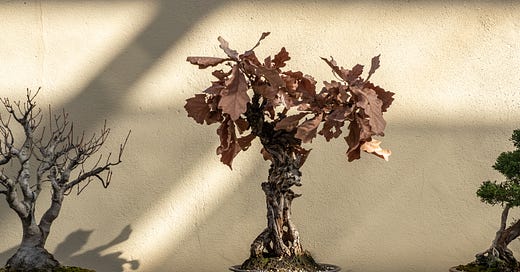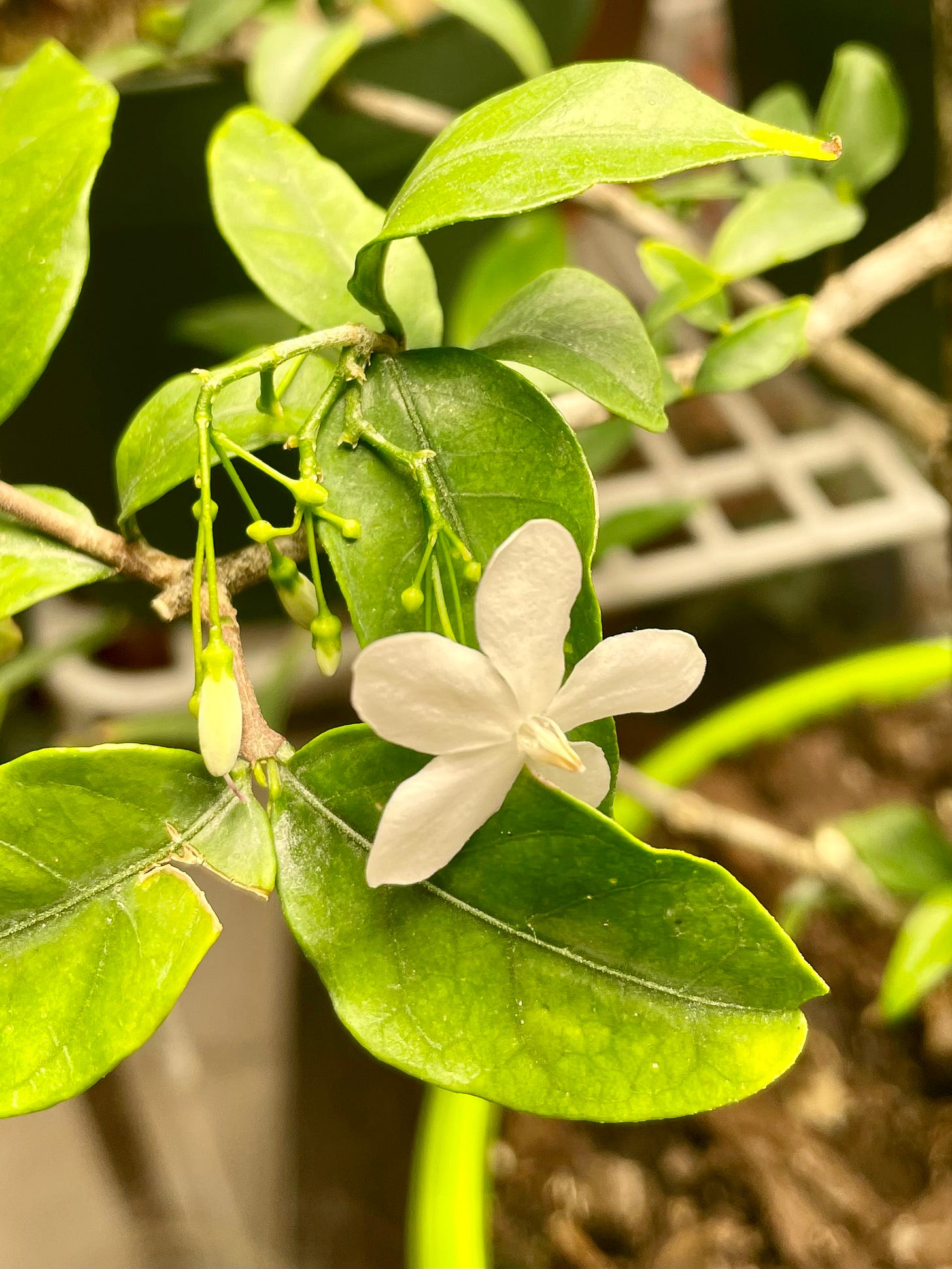I realize we don’t keep many personal boundaries here, but this once I hope you’ll permit me to say, simply, that it’s been a calamitous clusterfuck of a time. I’ve been leapfrogging from crisis to quagmire and have a ways to go. I’ll be okay some day, but not today.
Real-life work has ground to a crawl and tree work has shrunk to the bare essentials. Water when needed. Replenish fertilizer. Pay no mind to the probable fungal infection on that pine. One of my most expensive trees, my sweetgum, appears to be dead. RIP, sweetgum. Your promise was cut short by collateral damage.
When a tree is stressed—from pests, disease, or drought—it may drop its leaves. Trees need leaves to turn light into food, but leaves leach water through photosynthesis and divert valuable sugar from the tree’s trunk and roots. So in a period of crisis, the tree makes a calculated risk. It drops its leaves, conserves sugar, and waits for better times. The tree has stored energy away for just such an occasion. With a little luck, that energy reserve will power the tree through its healing and regeneration.
Both of my ficus drop leaves if I look at them the wrong way. I am mystified as to their watering needs and don’t think my 50/50 “soil” of sphagnum moss and mixed bonsai substrate is helping. Fortunately, figs are vigorous. The trees keep bouncing back.
Over the winter I impulse-purchased a Texas ebony from a seller on eBay. The tree traveled through a cold snap and spent its first week in my care shedding its lobed leaves like so many butterfly wings. It never managed to sprout new ones.
So this is where I am. My leaves have dropped. It’s happened before and will surely happen again. My growing familiarity with these defoliating events has given me a greater appreciation for their impermanence.
Still, that doesn’t make it any easier. When I get like this, I start doubting my instincts—all but the most suspicious and paranoid, that is. In response I try to reorient myself in my body. I break out the good tea. I take searing hot showers. I scratch the prickly leaves of my osmanthus to shake off water from the day’s soak. The idea is to keep the nerves stimulated. Take stock of my own roots.
I’ve had this water jasmine for a month now. It’s a common hedge shrub from Malaysia and Thailand that’s used for tropical bonsai, and it produces these droopy white flowers that release the most beautiful jasmine fragrance. It’s frequently planted in Buddhist temples, which is one of the reasons for its scientific name: wrightia religiosa.
Devoted sniffing of the water jasmine blooms has become a silly but effective daily ritual. Some days it’s the only act that grounds me in where I am and what I’m doing.
Like a ficus, the water jasmine is vigorous. I just pruned the branches after its last round of blooms and it’s already putting out new flower buds. I’ll take as many as I can get.
Tree reading
Smugglers of Joshua Tree Park’s eponymous trees may now face fines up to $20,000, with a fine of $5,000 for a first offense. [Los Angeles Times]
Scientists in China have found an old-growth forest 600 feet under ground level in a giant sinkhole. [South China Morning Post]






I've found simple sensory acts like the smelling of jasmine flowers that you describe to be some of the most grounding acts possible when the world feels unsteady under your feet.